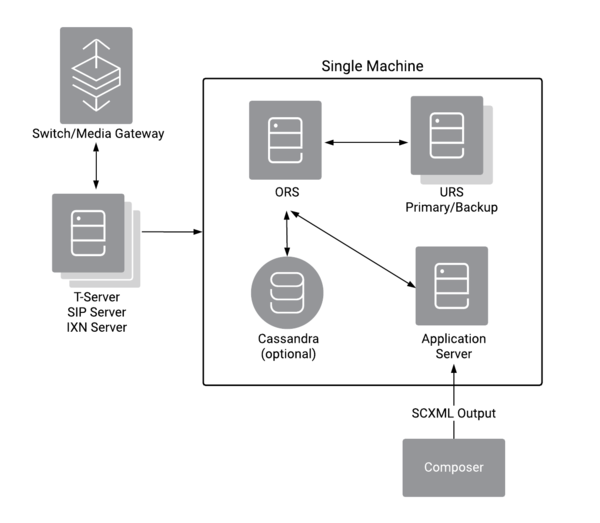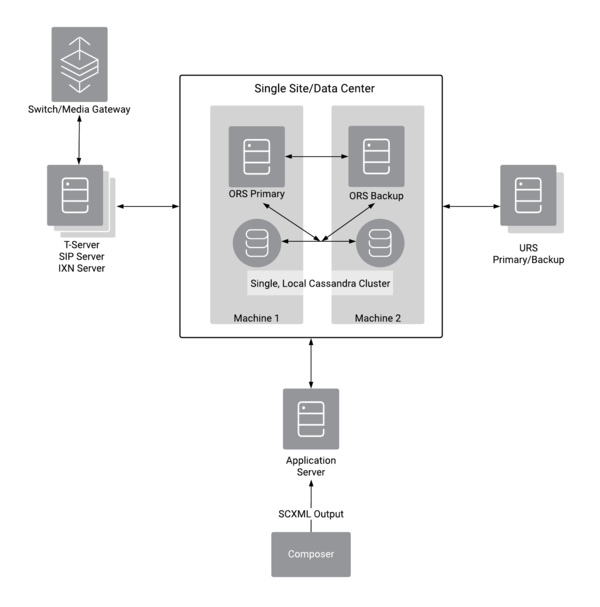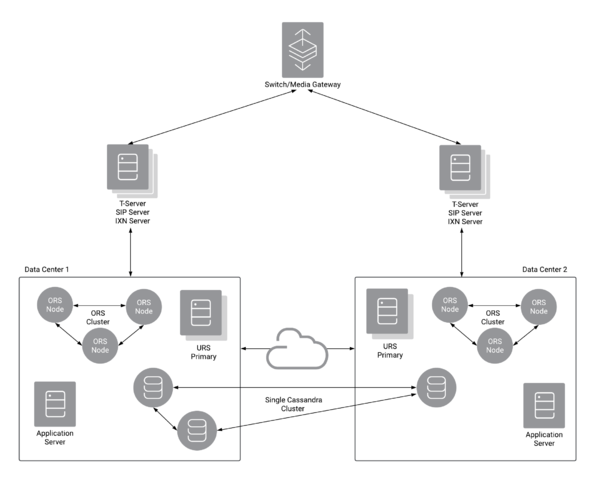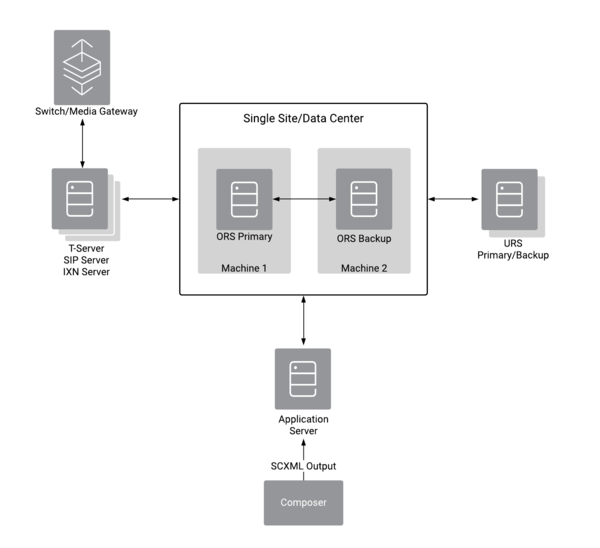Contents
Deployment Models
The following section provides examples of various ORS 8.1.3 and later deployment models and provides an overview of behavior, for single site, single site with redundancy, multi-site, and a single Cassandra cluster across sites:
Single-Site Deployment Model
The single-site deployment example assumes that all components are planned to reside within a single box. This deployment does not provide high availability, redundancy, or failure handling. ORS can now be deployed with either Redis or Cassandra. The figure below shows a single site deployment example.
Single-Site with Redundancy Deployment Model
The single site architecture with software redundancy across multiple boxes represents a standard deployment for enterprises which do not have the need or ability to provide geo-redundancy. In this deployment, two or more instances of ORS exist in a single cluster, on the same LAN. ORS can be deployed with either Redis or Cassandra.
The figure below shows a single site with redundancy deployment example.
Multiple-Site Deployment Model
In a logically separated environment such as this with multiple T-Servers, each distinct T-Server is connected to its own ORS cluster. Note that each ORS cluster can have its own private Cassandra instance or Redis instance, as ORS can be deployed with either Redis or Cassandra.
The figure below shows a multiple-site deployment example.
Single Cassandra Cluster across Multiple ORS Data Centers Deployment Model
ORS can be deployed with either Redis or Cassandra.
The figure below shows a Single Cassandra Cluster across Multiple-site Deployment example.
Single-Site with Redundancy and No Persistence Deployment Model
The following architecture with software redundancy across multiple boxes represents a deployment without Cassandra (or Redis) persistence/recovery.
The figure below shows a sample deployment with redundancy and without persistence to Cassandra (or Redis).





